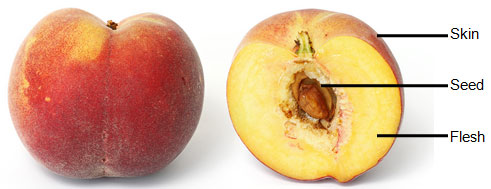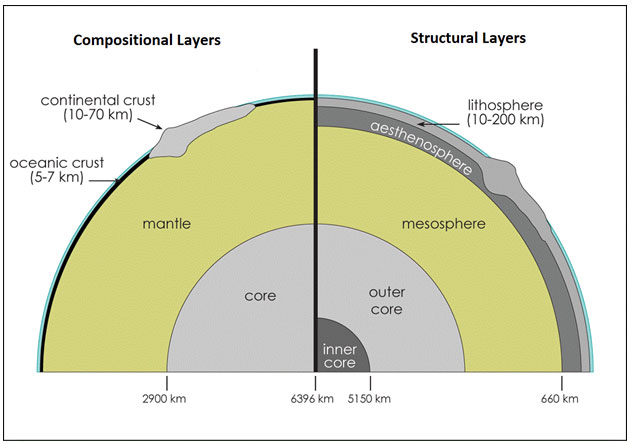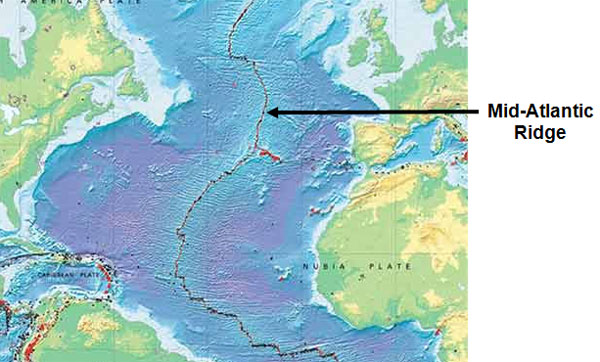Review of the Earth's Interior
What is Earth made of? What are the physical properties of the different layers of Earth? We will explore the answers to these questions in this section.
The interior structure of the earth can be examined in two different ways: based on chemical composition or physical properties. When we study the chemical composition of the Earth, we are looking at the different elements and compounds that make up the Earth's layers. When we study the physical properties, we are considering properties like temperature, density, and phase of matter.
Chemical Composition of the Earth
If we cut this piece of fruit in half, we will see that it is made of three parts: 1) a very thin skin, 2) the flesh, where most of the mass of the fruit is contained, and 3) a seed of significant size located in the center.

If we cut the Earth, we would see that it, like the peach, is made of three parts: 1) a very thin crust on the outside, 2) the mantle, which is where most of the mass of the Earth is contained, and 3) a core of significant size in the center.
Physical Properties of the Earth
Another way to study the Earth is to look at the physical properties of its layers. The Earth is divided into five main physical layers, the lithosphere, asthenosphere, mesosphere, outer core, and inner core. Click on the labels in the diagram below to learn more about each layer.
The image below compares the two different ways of studying the layers of Earth.

- Sources of images used for this section as they appear, top to bottom:
- Peach, Fir0002, Wikimedia Commons
- Layers of the Earth, Terra Daily
- Layers of the Earth, Modules of Being
- Adapted from Layers of the earth comparison, Vision Learning
Tectonic Plates
The Theory of Continental Drift and Sea Floor Spreading
In the early 1900s, a scientist named Alfred Wegener noticed how the continents seem to fit together and developed the Theory of Continental Drift. Continental drift is the theory that continents can drift apart from one other and have done so in the past. Wegner's theory also explained why fossils of the same plant and animal species are found on both sides of the Atlantic Ocean. In addition similar types of rock and evidence of the same ancient climatic conditions are found on several continents.
Wegner hypothesized that all the separate continents of today were once joined in a single landmass that he called Pangaea.
Sea-Floor Spreading
Many scientists found fault with Wegener's theory because they could not hypothesize what force of nature would move entire continents. It was not until many years later that new evidence provided clues as to what caused the continents to move.
Look at the map below. Notice the dark line running down the center. This is called the Mid-Atlantic Ridge and it is actually a chain of submerged mountains!

The Mid-Atlantic Ridge is part of a worldwide system of mid-ocean ridges. Mid-ocean ridges are underwater mountain chains that run through ocean basins. Mid-ocean ridges are places where the sea-floor is spreading. Sea-floor spreading is the process by which new oceanic lithosphere is created as older materials are pulled away. As tectonic plates move away from each other, the sea floor spreads apart and magma rises to fill in the gap to create new oceanic crust. Study the image below of sea-floor spreading.
Theory of Plate Tectonics
Sea-floor spreading provided proof of Wegener's theory of continental drift, but because both oceanic and continental crust appear to move, a new theory was developed to explain both continental drift and sea-floor spreading. This is the theory of plate tectonics, which states that Earth's lithosphere is divided into tectonic plates that move around on top of the asthenosphere.
What causes the plates to move? Scientists are not sure but have possible answers, which all involve the plates being affected by heat and gravity.
